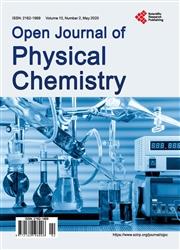The Gravito-Chemical Bond and Structures of Hydrocarbons and Water Molecules with Real Magnetic Charges
引用次数: 1
Abstract
Experimental and theoretical studies of the author (period: 1968-present) have shown that true sources of the magnetic field are magnetic fundamental particles (magnetic charges), and not moving electrons. The main reason for ignoring real magnetic charges, as well as true antielectrons in physical science is the hard conditions for confinement of these particles in atoms and substances, which is radically different from the confinement of electrons. Magnetic charges together with electric charges form the shells atoms which are electromagnetic, and not electronic. Namely, electromagnetic shells are sources of gravitational field which is a vortex electromagnetic field and described by the vortex rot [E - H]. Depending on the state polarization of vortex vectors rot [E - H] in compositions of atomic gravitational fields it is subdivided into paragravitational (PGF) and ferrogravitational fields (FGF). The overwhelming number of atoms emits PGF. Between the masses (bodies, atoms, nucleons and others) emitting PGF areas of negative gravitational “Dark Energy” are realized the forces of which press the masses towards each other. Namely, the compression of atoms by the forces of paragravitational “Dark Energy” underlies the chemical bond. The exception here is the ionic bond in ionic crystals. However, all ions have electromagnetic shells that generate the gravitational field. Consequently, ionic bonding is a relatively rare addition to gravito-chemical bond processes. The direct gravito-chemical bond of carbon atoms with hydrogen (1H) is physically forbidden due to the manifestation of the effect of ferrogravitational levitation between them and the repulsion of atoms from each other. Paradoxically, but all existing ideas about the structural device of hydrocarbons are based on such physically forbidden bonds which, moreover, must be realized through ionic bonds which in reality do not exist. Chemical bonding of carbon and hydrogen atoms to form hydrocarbons molecules is possible only if the hydrogen atoms are in the molecular form (1H2). In the composition of water, within the framework of the chemical formula H2O, two stable isomorphic molecular structures are formed. The chemical bond in the first structure is similar to the hydrocarbon scenario described above, i.e. in the process of combining paragravitational oxygen with a hydrogen molecule 1H2. The second molecular structure in water is formed under conditions of ferropolarization of the gravitational field of oxygen atoms under the influence of FGF of neighboring 1H atoms. In this case, the chemical bond is realized under the conditions of ferropolarization of the vortex vectors rot [E - H] of the gravitational fields of all atoms in the molecule and the co-directionality of them vectors Pfp ferropolarization. The gravito-physical properties of the presented molecular structures in the composition of water make it possible to name them, respectively, as heavy and light clusters.具有真实磁荷的碳氢化合物和水分子的引力化学键和结构
作者(从1968年至今)的实验和理论研究表明,磁场的真正来源是磁性基本粒子(磁荷),而不是运动的电子。在物理科学中忽略真正的磁荷和真正的反电子的主要原因是这些粒子在原子和物质中的约束条件很困难,这与电子的约束有根本的不同。磁荷和电荷一起形成了壳层原子,壳层原子是电磁的,而不是电子的。即电磁壳是引力场的源,引力场是一种涡旋电磁场,用涡旋rot [E - H]来描述。根据原子引力场组成中涡旋矢量rot [E - H]的状态极化,将其分为段引力场(PGF)和铁引力场(FGF)。大量的原子释放出PGF。在发射负引力“暗能量”的PGF区域的质量(物体、原子、核子和其他)之间,实现了将质量相互压向对方的力。也就是说,原子在引力作用下的“暗能量”的压缩是化学键的基础。例外的是离子晶体中的离子键。然而,所有的离子都有产生引力场的电磁壳层。因此,离子键是相对罕见的重力化学键过程的补充。由于碳原子与氢原子之间存在铁引力悬浮效应和原子间的斥力,在物理上禁止了碳原子与氢原子之间的直接引力化学键。矛盾的是,所有现有的关于碳氢化合物结构装置的想法都是基于这种物理上禁止的键,而且,必须通过实际上不存在的离子键来实现。只有当氢原子处于分子形式(1H2)时,碳和氢原子的化学键才能形成碳氢化合物分子。在水的组成中,在化学式H2O的框架内,形成了两种稳定的同构分子结构。第一种结构中的化学键与上面描述的碳氢化合物的情况类似,即在段吸氧与氢分子1H2结合的过程中。水中的第二种分子结构是在氧原子引力场的铁极化条件下,在邻近1H原子FGF的影响下形成的。在这种情况下,化学键是在分子中所有原子引力场的涡旋向量rot [E - H]和它们的共方向性Pfp铁极化的铁极化条件下实现的。在水的组成中所呈现的分子结构的重力物理性质使我们可以分别将它们命名为重簇和轻簇。
本文章由计算机程序翻译,如有差异,请以英文原文为准。
求助全文
约1分钟内获得全文
求助全文

 求助内容:
求助内容: 应助结果提醒方式:
应助结果提醒方式:


